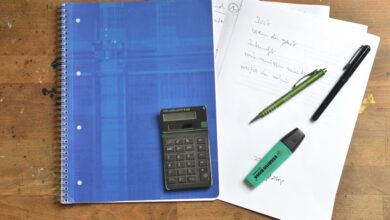
Are you looking at, How To Achieve Differentiation With Early Learners?
As educators, we all want to provide our students with the best possible learning experiences, but not every student learns at the same pace or in the same way. Early learners, in particular, require specialized attention to ensure they are progressing and achieving their full potential. One approach that can be very effective in supporting early learners is differentiation, which involves tailoring teaching methods and materials to meet the unique needs of each student.
How To Achieve Differentiation With Early Learners?
In this article, we will explore the concept of differentiation and provide practical tips for achieving it with early learners.
Understanding Differentiation
Differentiation is the process of modifying teaching strategies and resources to meet the varying needs and abilities of learners. This approach acknowledges that students learn differently and require individualized support to succeed. Differentiation can take many forms, including adjusting the pace of instruction, providing alternative learning materials, and incorporating multiple teaching strategies to appeal to different learning styles.
Benefits of Differentiation for Early Learners

Differentiation can be particularly effective for early learners who are just beginning to develop foundational skills. By providing individualized support, educators can ensure that each student progresses at their own pace and masters key concepts. This approach also helps to build confidence in early learners, as they are more likely to succeed when they are taught in a way that aligns with their learning styles and abilities.
Strategies for Achieving Differentiation with Early Learners
- Conduct assessments: Before you begin differentiating instruction for early learners, it’s important to understand their individual needs and abilities. Conduct assessments to identify areas where students may need additional support or where they are excelling.
- Use flexible grouping: Early learners may benefit from working in small groups with other students who are at a similar level. This allows educators to provide targeted support and resources to the group as a whole, while also tailoring instruction to the unique needs of each student.
- Provide alternative materials: Early learners may respond well to alternative materials that align with their interests and learning style. Consider using various resources, such as hands-on manipulatives, digital media, or visual aids, to engage early learners and enhance their understanding of key concepts.
- Offer choice: Providing early learners with choices can help to increase their engagement and motivation. Allow students to choose the format in which they complete an assignment, or offer a variety of activities that align with different learning styles.
- Adjust the pace: Early learners may require more time to process information and master new skills. Be patient and adjust the pace of instruction to meet the needs of each student. This may involve spending additional time on certain topics or providing extra practice opportunities.
- Incorporate multiple teaching strategies: Early learners may benefit from a variety of teaching strategies that align with their unique learning styles. Consider incorporating visual aids, music, movement, and other methods to engage early learners and enhance their understanding of key concepts.
Read more How To Overcome Social Media Challenges – Tips for Parents
Conclusion
Differentiation is a powerful tool for supporting early learners and ensuring they receive the individualized attention they need to succeed. By tailoring teaching methods and materials to meet the unique needs of each student, educators can help early learners build a strong foundation for future academic success. Remember to conduct assessments, use flexible grouping, provide alternative materials, offer choices, adjust the pace, and incorporate multiple teaching strategies to achieve early learners.
FAQs
- What is differentiation in education?
- Differentiation is the process of modifying teaching strategies and resources to meet the varying needs and abilities of learners.
- What are the benefits of differentiation for early learners?
- Differentiation can help early learners build confidence and ensure they are progressing at their own pace, which can lead to greater academic success in the future.
- How can educators achieve learners?
- Educators can achieve differentiation with









